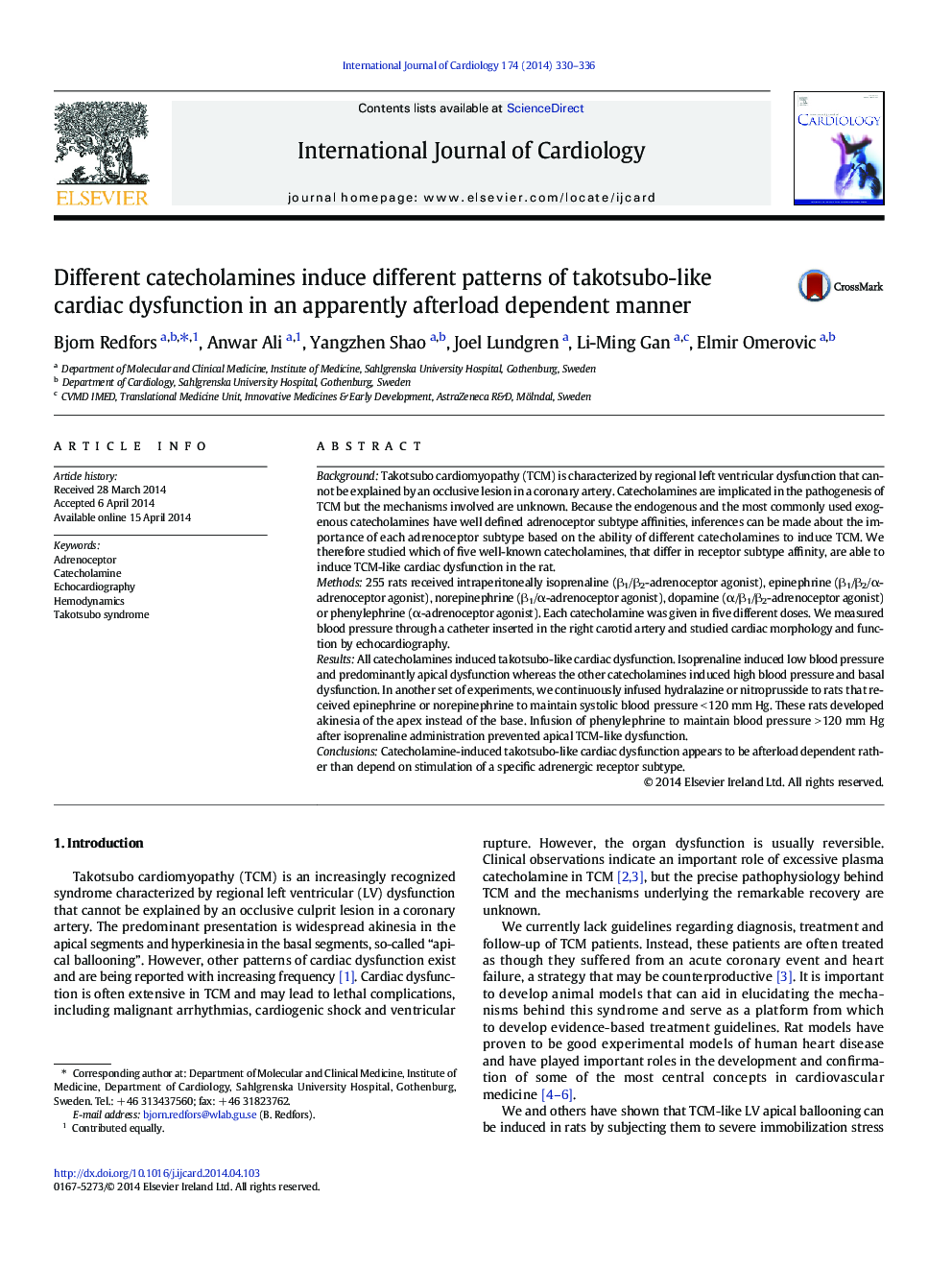| کد مقاله | کد نشریه | سال انتشار | مقاله انگلیسی | نسخه تمام متن |
|---|---|---|---|---|
| 5970190 | 1576185 | 2014 | 7 صفحه PDF | دانلود رایگان |
- Catecholamine excess has been shown to play an important role in takotsubo.
- The apex is affected in some takotsubo cases whereas the base is affected in others.
- We studied which of five catecholamines induced which pattern of takotsubo in rats.
- Catecholamines that associated with low blood pressure caused apical patterns
- Catecholamines associated with high blood pressure caused basal patterns.
BackgroundTakotsubo cardiomyopathy (TCM) is characterized by regional left ventricular dysfunction that cannot be explained by an occlusive lesion in a coronary artery. Catecholamines are implicated in the pathogenesis of TCM but the mechanisms involved are unknown. Because the endogenous and the most commonly used exogenous catecholamines have well defined adrenoceptor subtype affinities, inferences can be made about the importance of each adrenoceptor subtype based on the ability of different catecholamines to induce TCM. We therefore studied which of five well-known catecholamines, that differ in receptor subtype affinity, are able to induce TCM-like cardiac dysfunction in the rat.Methods255 rats received intraperitoneally isoprenaline (β1/β2-adrenoceptor agonist), epinephrine (β1/β2/α-adrenoceptor agonist), norepinephrine (β1/α-adrenoceptor agonist), dopamine (α/β1/β2-adrenoceptor agonist) or phenylephrine (α-adrenoceptor agonist). Each catecholamine was given in five different doses. We measured blood pressure through a catheter inserted in the right carotid artery and studied cardiac morphology and function by echocardiography.ResultsAll catecholamines induced takotsubo-like cardiac dysfunction. Isoprenaline induced low blood pressure and predominantly apical dysfunction whereas the other catecholamines induced high blood pressure and basal dysfunction. In another set of experiments, we continuously infused hydralazine or nitroprusside to rats that received epinephrine or norepinephrine to maintain systolic blood pressure < 120 mm Hg. These rats developed akinesia of the apex instead of the base. Infusion of phenylephrine to maintain blood pressure > 120 mm Hg after isoprenaline administration prevented apical TCM-like dysfunction.ConclusionsCatecholamine-induced takotsubo-like cardiac dysfunction appears to be afterload dependent rather than depend on stimulation of a specific adrenergic receptor subtype.
Journal: International Journal of Cardiology - Volume 174, Issue 2, 15 June 2014, Pages 330-336
